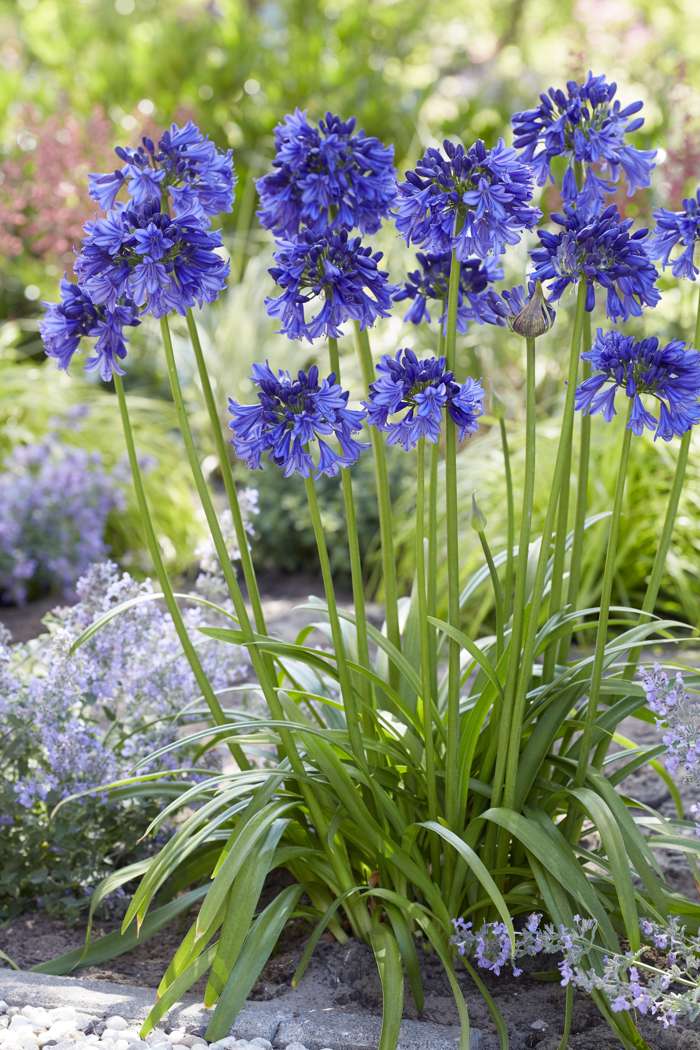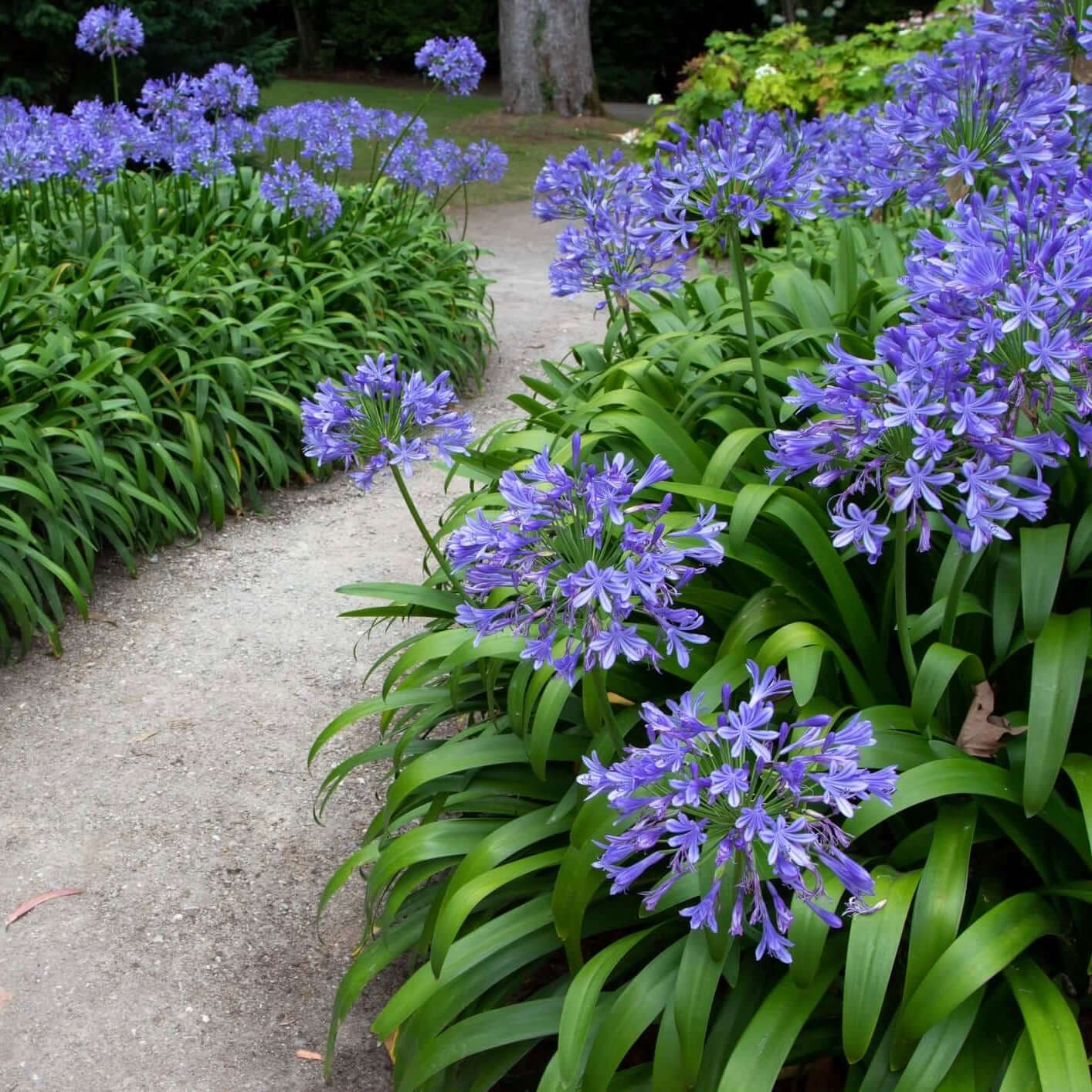Agapanthus Propagation: Tips for Expanding Your Plant Collection
Agapanthus Propagation: Tips for Expanding Your Plant Collection
Blog Article
Grasping the Art of Agapanthus Care: Vital Actions for Healthy And Balanced Growth and Dynamic Flowers
In the realm of cultivation, the growing of agapanthus stands as a satisfying undertaking for those who look for to nurture these sophisticated blooming plants. From picking the right selection to mastering trimming methods, the journey towards cultivating thriving agapanthus plants is multifaceted and holds the crucial to opening the full capacity of these organic treasures.

Selecting the Right Agapanthus Variety

When picking the appropriate Agapanthus variety for your garden, think about variables such as climate suitability, bloom shade, and growth practice. Agapanthus, frequently recognized as Lily of the Nile or African lily, comes in a variety of shades ranging from tones of purple and blue to white. Pick a bloom color that enhances your existing garden combination to produce a harmonious landscape. Additionally, consider the climate in your area to ensure the Agapanthus variety you select can flourish in your certain conditions. Some selections are extra tolerant of cold temperature levels, while others favor warmer environments. Recognizing the development practice of various Agapanthus selections is crucial for proper positioning within your yard. Some varieties have a clumping development routine, ideal for containers or boundaries, while others have an even more dispersing nature, appropriate for ground cover or mass growings. By carefully reviewing these elements, you can pick the ideal Agapanthus selection to boost the appeal of your garden.
Perfect Planting Problems
Thinking about the optimum environmental requirements is crucial for effective Agapanthus farming. Agapanthus plants are sensitive to chilly temperature levels and ought to be protected from frost throughout wintertime months.
To guarantee healthy and balanced growth and lively blooms, plant Agapanthus light bulbs at a depth of concerning 2-4 inches and space them 8-12 inches apart. Including raw material, such as garden compost, to the dirt can enhance drainage and fertility, promoting durable root advancement. Mulching around the base of the plants helps preserve moisture and reduces weed growth. Normal watering is crucial, particularly during the expanding period, to keep the soil consistently damp however not soaked.
Watering and Fertilizing Tips
Keeping correct dampness degrees and supplying essential nutrients are crucial elements in the care routine for Agapanthus plants. It is vital to strike an equilibrium when it comes to watering Agapanthus. If overwatered, these plants choose regularly wet dirt however are prone to root rot. During the growing season, water deeply when a week, making certain the soil is well-draining to stop waterlogging. In hotter environments or during periods of dry spell, even more regular watering might be necessary to maintain the soil uniformly damp. Nevertheless, minimize watering in the winter months to stop water logged problems.
Feeding Agapanthus is important for advertising healthy and balanced development and respected flowers. Apply a balanced fertilizer, such as a 10-10-10 formula, in the early spring as brand-new growth emerges. Repeat this application every 6-8 weeks throughout the expanding season. Stay clear of extreme fertilization, as it can cause lush vegetation at the expense of flowers. Constantly adhere to the maker's guidelines for proper dilution and application approaches. By complying with these watering and fertilizing pointers, you can guarantee your Agapanthus plants prosper and generate vibrant, resilient flowers.
Trimming Techniques for Agapanthus
Pruning Agapanthus plants at the ideal times and with proper methods is vital for maintaining their health and wellness and promoting optimum growth and flowering. The suitable time to prune Agapanthus remains in late winter season or early spring before new growth emerges. Start by removing any dead or yellowing fallen leaves near the base of the plant. Cut them as close to the ground as feasible without damaging the arising shoots.
For flowered stems, wait till the blooms have actually perished and after that trim them back to the base. This wikipedia reference not just cleans the plant's appearance however likewise motivates the advancement of new blossom buds. Deadheading spent blossoms can likewise redirect the plant's power into generating more blooms as opposed to setting seeds. Nonetheless, if you wish to accumulate seeds for propagation, leave some blossoms to mature and completely dry on the plant.
Remember to make use of tidy, sharp tools to make accurate cuts and lower the danger of introducing diseases. Agapanthus. Regular pruning will aid keep your Agapanthus looking healthy and neat while making sure a plentiful screen of gorgeous flowers
Handling Usual Pests and Conditions
After guaranteeing correct trimming techniques for Agapanthus, it web is crucial to deal with usual bugs and illness that can influence the health and vigor of these plants. Agapanthus plants are typically sturdy but can still succumb specific issues. One usual bug that affects Agapanthus is the Agapanthus gall midge. This little, orange fly lays its eggs in the foliage, bring about distorted growth and flower buds that fall short to open. To fight this pest, trim and ruin any kind of afflicted plant parts and consider using insecticidal soap.
Another usual issue is fungal leaf place, which offers as dark lesions on the fallen leaves. To avoid fungal conditions, make sure good air flow around the plants, stay clear of above watering, and eliminate any contaminated leaves quickly. Additionally, Agapanthus plants can struggle with origin rot if they are planted in poorly draining pipes soil. To avoid this, plant Agapanthus in well-draining soil and prevent overwatering. By being vigilant and taking punctual action against bugs and diseases, you can assist your Agapanthus plants flourish and generate vivid blooms.

Final Thought
To conclude, grasping the art of agapanthus treatment involves picking the best selection, offering suitable planting conditions, appropriate watering and feeding, suitable trimming techniques, and resolving usual pests and illness. By adhering to these necessary actions, you can ensure healthy and balanced development and vibrant blooms for your agapanthus plants. Keep in mind to regularly keep track of and keep your plants to advertise their general wellness and long life.
To make certain healthy growth and vibrant blossoms, plant Agapanthus bulbs at a depth of regarding 2-4 inches and area them 8-12 inches apart. By following these watering and feeding suggestions, you can guarantee your Agapanthus plants prosper and create lively, durable flowers.
One usual parasite that affects Agapanthus is the Agapanthus gall midge. Additionally, Agapanthus plants can suffer from origin rot if they are planted in improperly draining pipes soil. see here By adhering to these important steps, you can guarantee healthy and balanced development and vibrant blooms for your agapanthus plants.
Report this page